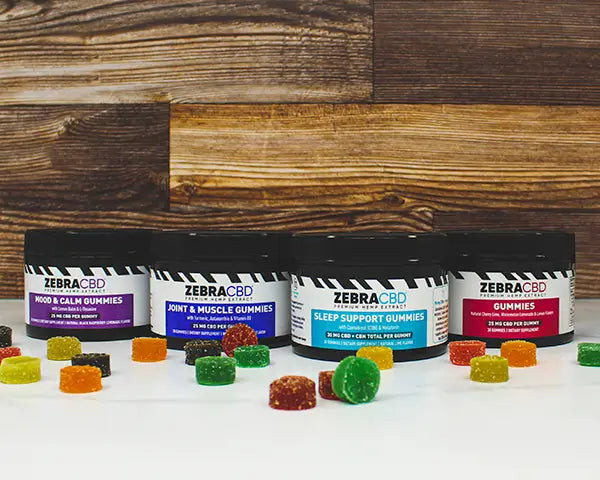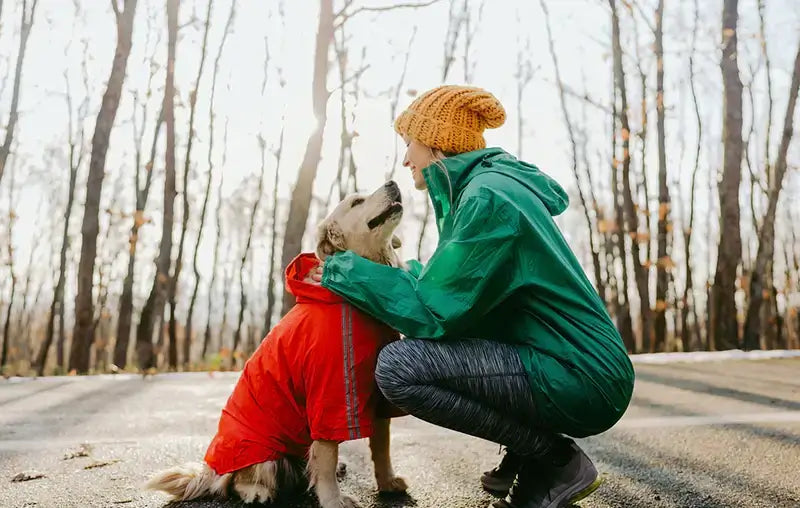
Being a dog owner is all fun, games and cuddles until the excessive barking starts — or worse, when it never seems to stop. Whether your pup’s just happy you’re home or overly excited to see a neighborhood squirrel, dogs bark for several reasons.
But when it becomes an ear-splitting habit, it can leave you feeling frustrated, annoyed and searching for solutions.
This blog will not only outline how to train a dog to stop barking — complete with actionable steps — but it will also highlight some solutions like Canine CBD oil or dog CBD treats and some possible triggers to help you prevent the fuss from happening altogether.
Follow along to put a muzzle on the noise and bring some peace and quiet back into your daily routine.
How to Determine The Root Cause of Your Pup’s Barking
You might know all the tricks in the dog owner’s handbook, but if you can’t seem to nail down the source of the problem, how can you know which tool is right for the job?
Monitor the dog’s behavior and see if you notice any patterns that seem to directly correlate with its non-stop barking fits. Just like humans, dogs can experience an array of emotions, too.
Here are a few emotions that could be causing all the racket:
- Fear – Perhaps your dog’s incessant barking is rooted in fear. Alarm barking can be triggered by events such as a territorial encounter with another animal or the threat of a potential intruder. So, research on strategies to help your dog sleep and how to calm a nervous dog.
- Panic – Closely linked to fear, panic could be another factor setting your dog off on an all-day excessive barking debacle. Common causes for this type of reaction include loud noises such as fireworks or smoke alarms, unfamiliar people or separation stress from pet owners for long periods.
- Boredom – Some dogs may show obvious signs of boredom by exhibiting lethargic behavior. However, others may be a bit more vocal about their need for stimulation. If your puppy isn’t getting enough physical or mental exercise throughout the day, constant barking could be your dog’s way of calling out for attention.
- Greeting – Maybe your canine companion is just excited to see you and yips happily each time you walk through the front door. Or perhaps excited barking is how your dog socializes with other dogs to let them know that they’d like to play.
- Frustration – Whether your dog’s ball is just barely out of reach after they’ve wedged it under the sofa or you’ve momentarily tucked away their favorite toy to prevent them from destroying it, frustration could be the cause for the nuisance.
One of the reasons your dog is barking may be hunger. So, be sure to know how many times a day should a dog eat. Keep a log of when your dog’s barking seems to be at its worst and create a course of action accordingly to remedy the situation.
How to Manage Excessive Barking
Once you’ve gained a bit more clarity about what the dissonant chorus of canine yelps might be rooted in, it’s time to determine how best to manage the outbursts and to prevent them from happening time and time again.
Take a look at the following approaches to determine which one — or which combination of methods — may be best suited to your situation.
#1 Training Commands
If you haven’t already done so, reviewing some basic commands and putting them into regular practice could be a good place to start. Regardless of the age of your pup, it’s never too late to learn something new.
In fact, veterinarian Lynn Buzhardt debunks an old myth by confirming that older dogs can learn new tricks since they are often less distractible and not quite as active as younger pups.
So, if you’re worried that it might be challenging for your older dog to unlearn a bad habit, think again.
The San Francisco SPCA suggests focusing on the “quiet” command and provides specific instruction about how to teach and incorporate it into your routine for five to 10 minutes, two times each day:
- Take advantage of a teachable moment when your dog is already barking or plan for a lesson at a time when you know your pup will be, such as the arrival of an unfamiliar guest.
- Look for a pause in the action (about 10 seconds or so in between barks) and repeat the word “quiet” to them while offering a reward, such as a treat.
- The SFSPCA recommends reducing the visibility of the reward as your dog begins to master the command.
- Start by placing it directly in front of them where your dog can easily see and smell it.
- Repeat the command but offer the reward in a slightly less visible location.
- Continue to alter the placement of the reward until it is no longer within sight.
- Over time, play around with the distance you place in between yourself and your dog when delivering the command.
Gradually lengthen the distance as well as the time you wait before giving the reward, making your dog come to you to receive it. Depending on the severity of the dog barking fit, you may sometimes find yourself having to wait longer than others to capitalize on a moment of silence.
Patience, as well as keeping your dog on a leash to prevent them from chasing an object that may be triggering the commotion, will be key to executing this training effectively.
#2 Physical Exercise
If you suspect boredom to be a major player in your dog’s cases of woofing and whining, try stopping the ruckus before it starts by ensuring your pup is getting enough physical activity.
When accommodating your pup’s physical needs, consider adjusting your schedule by:
- Getting up a bit earlier to make time for extended morning walks before a long workday.
- Stopping by the house mid-day for a walk around the block or to toss a ball around in the backyard if you or someone you know is available in the afternoon.
- Hiring a dog walker who can let your pup out and socialize with other dogs for 20-30 minutes each day or even a few times per week.
- Combining activities if you’re still pressed for time so that your dog can tag along with something you’ve already made time for such as a daily jog or swim.
Remember that boredom can also be rooted in a lack of mental stimulation, as well. Instead of a standard ball or chew toy, swap them out for a dog puzzle that requires more mental focus and will keep them entertained for longer.
#3 Bark-Proof Your Home
Not sure how to make a dog stop barking when you’re not around? Start by making a few adjustments to its environment.
While you may not be able to remove the trigger entirely, there are a few steps you can take to curtail the exposure to whatever it is that’s causing your dog to bark in the first place.
Particularly if you aren’t home to intervene at the time the excessive barking starts, the American Kennel Club suggests leaving soothing music or a familiar television show on throughout the day. A white noise machine may also do the trick when it comes to deafening those everyday neighborhood noises that may be distracting or worrisome for your pup.
Other dog bark-proofing tactics include:
- Keep sights to a minimum – Keeping the blinds drawn if you know your pup tends to be set off by neighbors coming and going or by other passerby pets throughout the day.
- Make your pup comfortable – Leave objects with your scent on them nearby when you’re not around to comfort the worry caused by separation.
- Try a crate – Depending on the dog, crates can either provide them with a safe haven or a space that only serves to make matters worse. If crating is a comforting option for your pet, consider doing so to keep them calm and commotion-free whenever you’re away from home.
#4 CBD Chews
If stress or nervousness tends to be a common cause of your dog’s commotion, look to the calming effects of CBD. So, is CBD safe for your dog? Cannabidiol is the non-psychoactive component found in marijuana that may be helpful for both humans and pets when it comes to stabilizing moods and soothing nerves.
Not sure if your pet’s stress is getting the better of them? Here are a few signs to watch out for:
- Heavy panting, pacing or shaking
- Constant licking or drooling
- Frequent urination or incontinence
- Skittish behavior such as hiding or escaping
- Dilated pupils
- Alert, pinned-back ears
- Heightened vocalization such as whining or barking
CBD dog chews are flavorful snacks that are tasty and beneficial to your pup’s overall well-being. Working them into your pup’s daily routine may be an effective avenue through which to confront the issue of barking.
Combat Barking With Zebra CBD Calming Chews
From dog training to interactive toys, there are a number of effective ways to stop your dog from unwanted barking and to keep you — and your neighbors — from constantly reaching for earplugs. However, if you’re looking for a long-term answer to panic-induced barking, ease your pet’s worries with Zebra CBD Calming Chews for dogs.
Made with safe, high-quality ingredients, you can feel good about feeding your dog a chew you can trust. They’re made with hemp that’s been organically grown in Nevada, absolutely no detectable THC and natural ingredients such as ashwagandha, German Chamomile and Omega-3.
Stabilize your pet’s mood and silence the noise by trying Zebra CBD Calming Chews today.
Source:
RSPCA. What causes dogs to bark excessively? https://kb.rspca.org.au/knowledge-base/what-causes-dogs-to-bark-excessively/
San Francisco SPCA. Dog: Quiet Command. https://www.sfspca.org/sites/default/files/dog_commands_quiet.pdf
VCA Hospitals. Can Old Dogs Learn New Tricks? https://vcahospitals.com/know-your-pet/can-old-dogs-learn-new-tricks
American Kennel Club. How to Stop Nuisance Dog Barking. https://www.akc.org/expert-advice/training/how-to-stop-dog-barking/
VCA Hospitals. Signs Your Dog is Stressed and How to Relieve It. https://vcahospitals.com/know-your-pet/signs-your-dog-is-stressed-and-how-to-relieve-it










